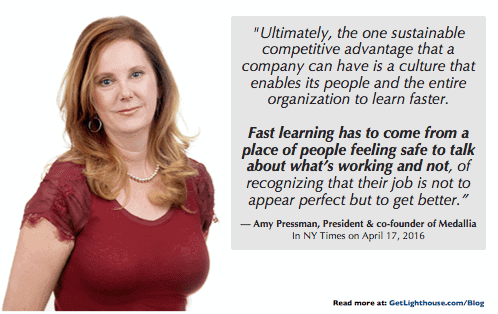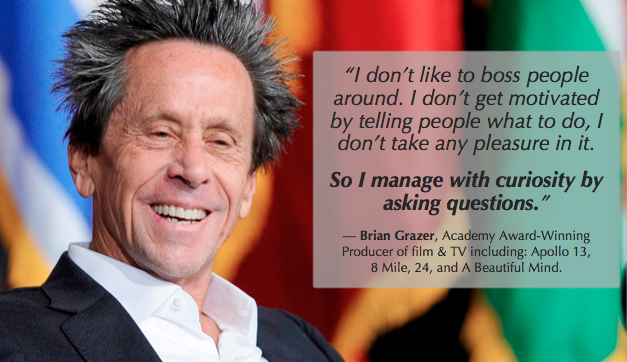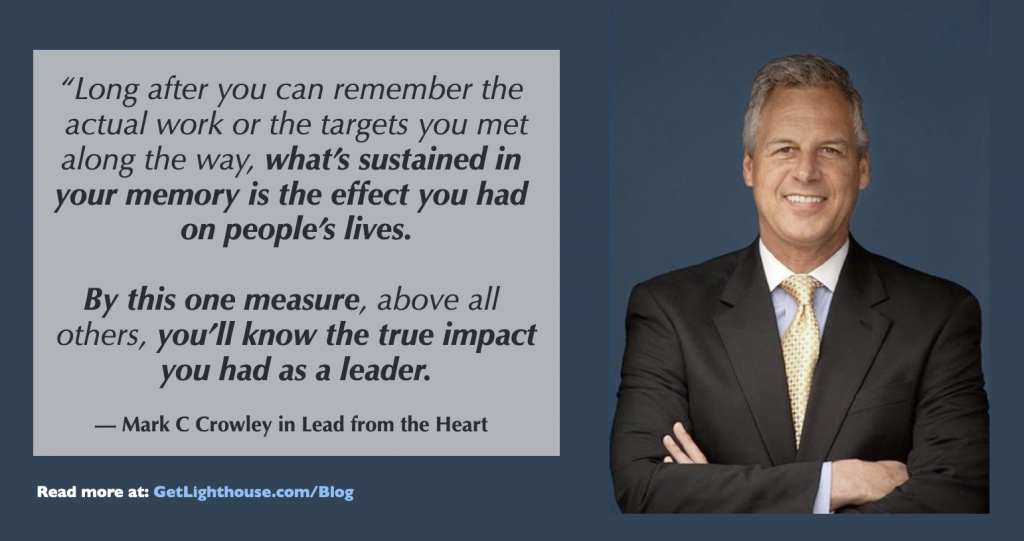Do you ever feel like you can't be honest at work? Like you have to put on a smile and pretend everything is fine, even when it's not? Or, do you find only positive comments are welcome, even at the expense of important news and issues?
If any of those are true for you, your workplace may have a toxic positivity problem.
Toxic positivity is when being upbeat is valued above all else. Real problems get dismissed or suppressed to maintain happy facades, either by ignoring them, or by papering over concerns with positive platitudes. It can feel both frustrating and suffocating to anyone with a more realistic or balanced view.
As a leader, you set the culture. If toxic positivity has taken hold in your workplace, it's your responsibility to fix it. Today’s article will teach you how.
Table of Contents

What is Toxic Positivity in the Workplace?
Toxic positivity is a tricky problem that can sneak into work cultures focused on being upbeat no matter what.
It starts innocently enough. Lots of popular business books preach the power of positive thinking (there’s even a long time best seller with that name), and psychologists tend to often say that: “an optimistic mindset is your way to happiness.” As a result, some leaders mistakenly try to create a "good vibes only" attitude among them and their team. They want people to be happy at work, after all!
But here's the rub: when taken too far, forced positivity backfires.
Why? Well, let's say something worrying happens that needs to be addressed seriously. But in a toxic positivity culture, everyone feels pressured to smile and act like everything's fine. That can lead to delayed reactions to problems, or outright suppression or ignoring of important issues.
These real, important issues get dismissed with platitudes like:
- “It’ll all work out, don’t worry about it!” = Dismissing real problems that need solutions.
- “Your attitude determines your altitude.” = Putting the blame on people’s mindset when issues arise from external factors.
- “Happiness is a choice - keep your head up!”= Framing emotions as something you can consciously control at all times.
- “Good vibes only!” = Discouraging any emotional expression perceived as negative.
The underlying message is that people should ignore or suppress anything other than positive feelings and statements. This creates an environment where employees feel pressure to put on a happy face and pretend everything is fine, even when it is not.
In a nutshell, the underlying message of toxic positivity is: "Don't rock the boat. Pretend everything's fine, even when it's not."
That's not healthy or helpful for anyone.

The Damaging Impacts of Toxic Positivity
Now that you understand why positivity can turn toxic, it’s important to recognize the negative impacts. Toxic positivity can seriously damage your workplace culture, team dynamics, and employee wellbeing.
Let’s take at some of the major issues it causes in more detail.
Suppressed Problems and Lost Productivity
When employees feel pressured to put on a happy face and only discuss positive things, it stops real problems from being addressed. Negative emotions and concerns don't just disappear — they fester and grow worse when left unspoken. This leads to frustration, resentment, and lost productivity as people waste energy pretending things are fine rather than actually improving the situation.
For example, if a team member is struggling with their workload, in a toxic positivity culture, he doesn't feel comfortable bringing this up to his manager. That will build up and create a feeling of learned helplessness; before long, it will lead to them burning themselves out trying to keep up and feeling like they’ll never get help. Meanwhile, if he could have an open dialogue about managing priorities and capacity, the problem could be solved.
Toxic positivity strangles the honesty and transparency needed to recognize and fix workplace problems. It's like trying to cover up mold – you might not see it anymore, but it's still there, rotting things from the inside.
Loss of Psychological Safety
Psychological safety refers to an environment where people feel safe speaking up, sharing ideas openly, and bringing concerns to the team. This is essential if you want to hear innovative ideas from your teammates, uncover productivity gains, fix problems when they’re small, and keep your team engaged.
Unfortunately, toxic positivity destroys psychological safety.
It pressures people to only share positive things and cheerlead — not talk about worries, frustrations, drawbacks, or other "negative" topics. The best ideas are safely debated to make them better, and tough problems get solved by bringing them to the surface. Yet, toxic positivity prevents all of that.
Worst of all, this approach causes a culture of silence around real issues. It also invalidates your people's genuine emotions.
When you can only express happiness and optimism, it implies other feelings are "wrong." This leads to walking on eggshells, self-censorship, and anxiety as people hide parts of themselves to fit in. That’s the antithesis of psychological safety.
As humans, we all experience the full range of emotions. Forcing only one side of that spectrum creates an environment where people hide their truth and cannot be authentic. That eliminates the benefits that help teams thrive and create psychological safety.
Increased Stress and Burnout
Maintaining a veneer of constant cheerfulness is exhausting. It takes a huge emotional effort to suppress real stress, anxiety, sadness, concerns, or anger. This causes additional internal turmoil and wears your people down over time.
Toxic positivity discourages seeking help or support. Admitting you are struggling gets framed as being "negative," so what’s the point of bringing it up? Instead, your people will suppress their feelings and concerns, which wastes a ton of energy.
Eventually, many will burn themselves out trying to uphold an image of endless positivity, or they’ll simply disengage at work completely.
This perpetual stress and lack of authentic support fuels burnout and turnover. Employees exhaust themselves keeping up appearances until they hit breaking points. At that point, either they’re frustrated and leave for a better workplace, or their productivity and effectiveness drops due to burnout.
Knowing how damaging toxic positivity can be, let’s take a look at how you can catch it before it causes these kinds of problems on your team.
Recognizing the Signs of a Toxic Positivity in Your Workplace
Toxic positivity tends to creep in subtly at first. It may seem like people are just trying to keep their spirits up. But over time, it can calcify into an oppressive norm that shuts down honest conversation.
Watch for these common signs your workplace may have a toxic positivity problem, before it’s too late:
Sign #1: Trivializing Real Issues
Listen for platitudes used to minimize or outright dismiss worrying matters:
- "Don't sweat the small stuff!"
- "Everything will work out, it always does!"
- "We'll be fine, this is just a bump in the road!"
While the intent may be to keep morale up, the effect is invalidating real problems. This prevents giving issues the serious attention they require.
Sign #2: Stifling Constructive Feedback
What happens when someone raises concerns or constructive critiques?
- Are they labeled as "negative" or "whiners"?
- Do others get uncomfortable and try to shut down dissent before it’s explored?
- Does all critical feedback get discounted as not constructive?
Invalidating criticism - even if it's delivered respectfully - suggests real problems are being suppressed. People learn it's safer to stay quiet, and issues fester. And the best ideas fail to emerge, because they never go through the crucible of focused feedback and honest evaluation.
Sign #3: Forced Cheerfulness
As a leader, it’s important you take note if there's tension between someone's outward positivity and their inner reality:
- Are your people putting on fake smiles while feeling awful inside?
- Is laughter used nervously to relieve discomfort when problems arise?
- Is there high stress, burnout, and passive aggressive behavior bubbling beneath the surface?
Forced positivity breeds emotional dishonesty and mistrust. People hide real feelings and channel tensions into unhealthy ways. That corrodes your workplace culture over time, and destroys productive collaboration over time.
When you see these signs, make sure to act, so that it doesn’t become common practice in your culture. Here’s a few ways to handle it.

How to Deal with Toxic Positivity at Work as a Leader
As a leader, you set the tone for your entire team. That means that if toxic positivity has grown roots into your workplace culture, the responsibility falls on you to address it proactively.
It may seem easier to keep up a facade of forced cheerfulness, but true leadership requires having courageous conversations and creating an environment of psychological safety where problems can be raised openly. That's one of the main differences that distinguish a strong leader from a weak one.
A bad manager doesn’t like to deal with people and solve their problems. And since you are reading this, it indicates you want to be better than that.
So here are some great ways you can start to stop toxic positivity in its tracks:
Encourage Critical Thinking and Challenging Ideas
It starts with you and your actions. Don't just say you're open to feedback — actually invite questions, dissenting perspectives, respectful debate, and critical thinking.
Make it clear that challenging existing ways of doing things is not "negative" but rather leads to innovation and progress. You want your team to feel safe constructively critiquing systems and processes.
When psychological safety is high, team members will feel comfortable surfacing issues without being labeled "problematic" or "negative" for doing so.
Of course, there’s a balance to this; you should still shut down any bullying, overly harsh criticism, or unproductive behaviors, so don’t mistake this as a license to say anything, any time, to anyone.
Some ways to encourage a more balanced approach include:
- In meetings, encourage team members to share different viewpoints. Don't just ask if anyone has questions. Ask "What are some potential drawbacks we should think through?" or "Does anyone see any risks we should plan for?" Make it clear that you want to see a “real discussion”, not just passive agreement.
- Listen fully, affirm valid points made by your team, and explain your reasoning - don't just state your position and immediately move on. These actions will encourage your team members to do the same.
- If certain team members seem hesitant to speak up, talk to them 1-on-1 about how you can build more trust. Then keep those conversations private so they know confidentiality will be respected. You may also uncover issues that would not be raised in a group setting. Be sure to act on what you uncover to improve team collaboration.
The more your team sees you welcome substantive feedback and alternative viewpoints, the more psychological safety will grow. Your team will bring more good ideas to the table, and will be confident raising valid, important concerns and problems, too.
If you are interested in learning more about this, then read our blog post: Why You Should Prioritize Psychological Safety To Have An Innovative Team.

Ask Thoughtful Questions
Toxic positivity often comes when leaders are unwilling to openly discuss problems. So be proactive in asking thoughtful questions to draw out underlying issues.
Some examples you can use:
- What drawbacks or concerns do you have about this proposal or idea? How could it be improved?
- What are some areas we could improve our current strategy?
- What do you think of (recent decision)? What are we not considering or missing?
- I want us to be able to bring up any problems early - have there been any recent roadblocks I should know about?
- What's something our team has been dealing with that we haven't fully acknowledged or resolved? How would you solve it?
If your team has been suppressing their true thoughts, ideas, and feelings for some time, it may take awhile to get them to open up. Embrace your role in proactively asking your team and rewarding those on your team who open up with praise and encouragement.
Keep probing beneath the surface with empathy so your team knows you genuinely want to hear about problems, not just cheerleading. Then, work collaboratively on improved solutions and other actions based on what you uncover.
For more insights on creating open communication, check our post about 6 Great Ways You Can Get More Feedback from Your Team.

Tackle Tough Situations with Honesty and Compassion
The hardest time to apply fixes to toxic positivity is when things are going the worst; it’s then that you are most tempted to paint a rosy picture and try to mask problems you worry will overwhelm or scare your team.
Unfortunately, that approach would be a big mistake. Level with your team about difficulties your organization is facing and speak frankly yet empathetically.
Being transparent about issues, and then outlining plans of action shows you have a grasp of what’s going on and are focused on finding solutions. Your team will respect brave leadership much more than empty positivity platitudes.
Most importantly, when tackling thorny issues, engage your team to be part of the solution:
- Lead with empathy first. Recognize the human impact so people feel heard. "I know this quarter has been really tough since the downturn..."
- Then clarify all the details so everyone understands the full picture. Share financials, metrics, and real examples. Total transparency is key.
- Explain the thought process behind decisions made and how they align to priorities to put the company on better footing.
- Invite your team to contribute ideas for next steps and solutions. "Going forward we will need to make changes. I want to hear your ideas..."
- Make it clear that every idea will be considered. Encourage critiques of your own plan. Foster healthy debate.
- Ultimately, incorporate their feedback into the path forward. Co-create solutions together.
With honesty, inclusion and compassion, you steer through challenges as a team. This builds trust, psychological safety and team buy-in.
Rather than telling your team what will happen, this approach engages them in shaping the solutions. They become invested partners, not passive recipients of edicts from above.
Want more crisis leadership tactics? Check out our guide on Crisis Leadership: 29 Questions To Ask Your Team To Thrive In Difficult Times.
Examples of Toxic Positivity Remarks to Avoid and Healthy Alternatives
Language matters. Certain phrases and responses can shut down communication, while others encourage it.
When you notice toxic positivity taking hold in your workplace, listen for these common platitudes and thoughtlessly positive remarks. Then, consciously shift your dialogue to be more constructive by using alternatives like we have in this handy table for you:
| Toxic Positivity Phrases | Healthy Alternatives |
|---|---|
| "Don't worry, everything will work out fine!" | "I know this is a tough situation. Let's talk through some potential options." |
| "Look on the bright side!" | "I understand you're disappointed. What could we do differently in the future?" |
| "The only thing we can control is our attitude!" | "This is really frustrating. How can I best support you?" |
| "Good vibes only!" | "If anything's been bothering you, I'm here to listen." |
| "Happiness is a choice - smile!" | "You seem upset. What is bothering you? How can I help?" |
| "Our team doesn't have problems, we have opportunities!" | "What are some things that haven't been going well that we could improve? How would you address them?" |
These are just examples. Use your own best judgment on what fits your personality and company culture. The key is to approach ideas and issues with an open mind and curiosity, instead of cutting things off immediately and redirecting to an order to “be positive!”
Are you Ready to Break away from Toxic Positivity in the Workplace?
Toxic positivity has no place in a psychologically safe, high-performing workplace. But it can be tough to recognize when cheerleading goes too far and shuts down honest communication.
By understanding the signs, impacts, and root causes of forced positivity, you can take steps to transform your culture for the better.
It starts with encouraging critical thinking, asking thoughtful questions, and tackling problems with candor and compassion. Leading with empathy, inclusion, and transparency will inspire your team much more than empty platitudes.
Keep in mind, that this work is ongoing – it requires conscious effort by you to regularly promote openness and ask questions to give your team a balanced mindset. However, the rewards are immense, because you’ll have better ideas and a more engaged team.
So be brave, be candid, and don't fear negative emotions – they are part of a manager’s life and a healthy team. Create a workplace where people can share the full spectrum of experiences and ideas.
The first step is acknowledging when toxic positivity takes hold. From there, you now have a roadmap to build the psychologically safe culture your team deserves.





